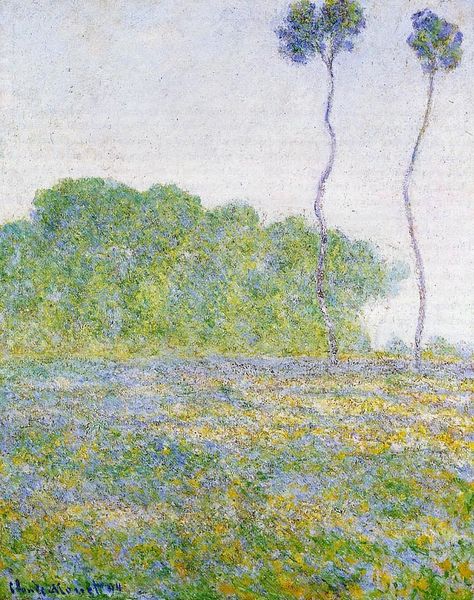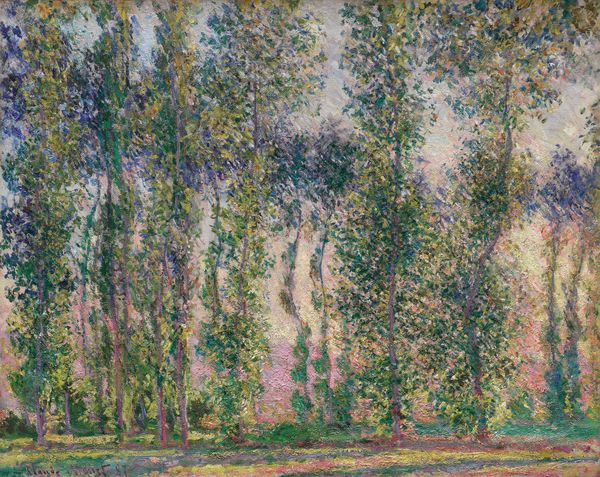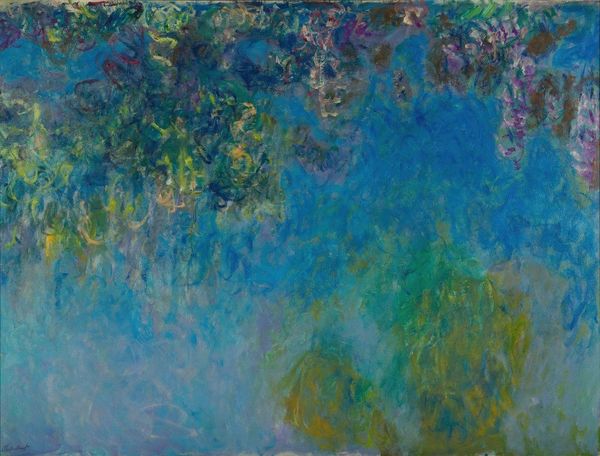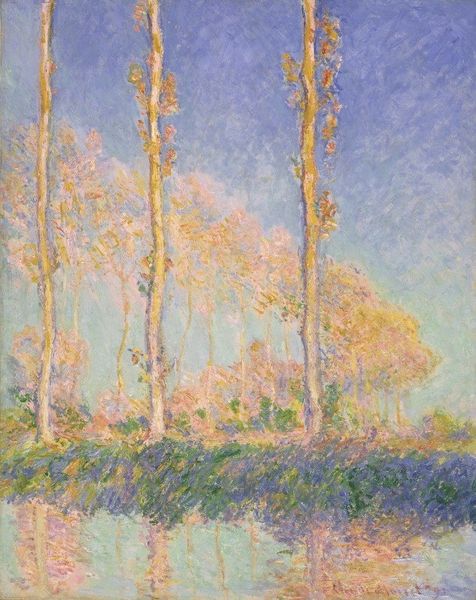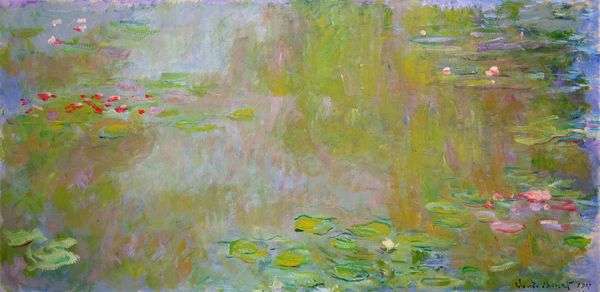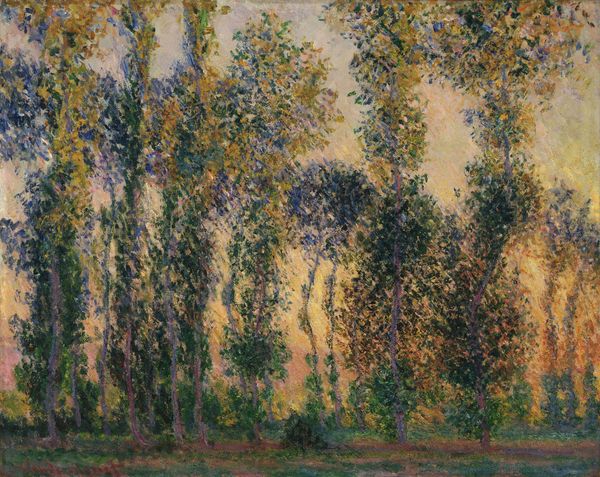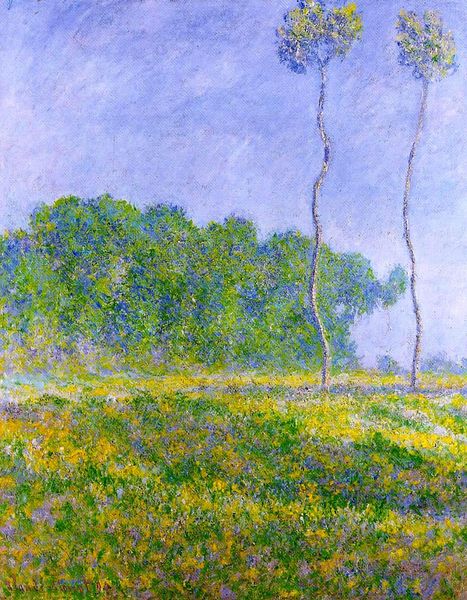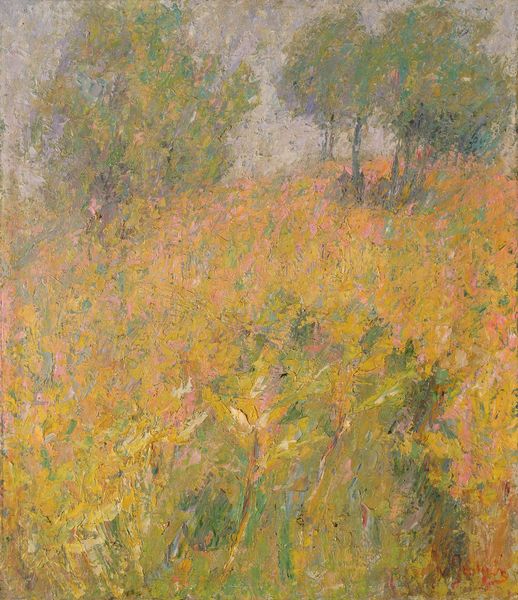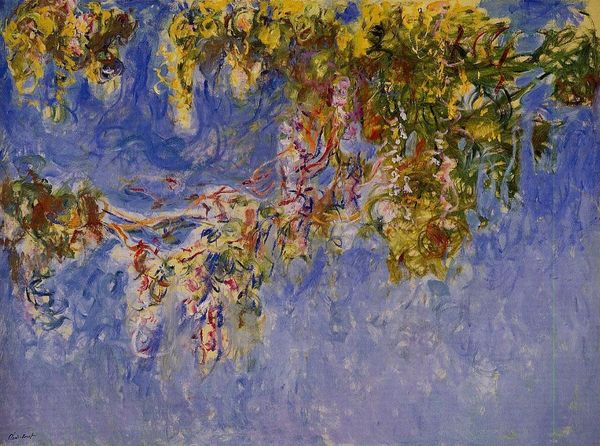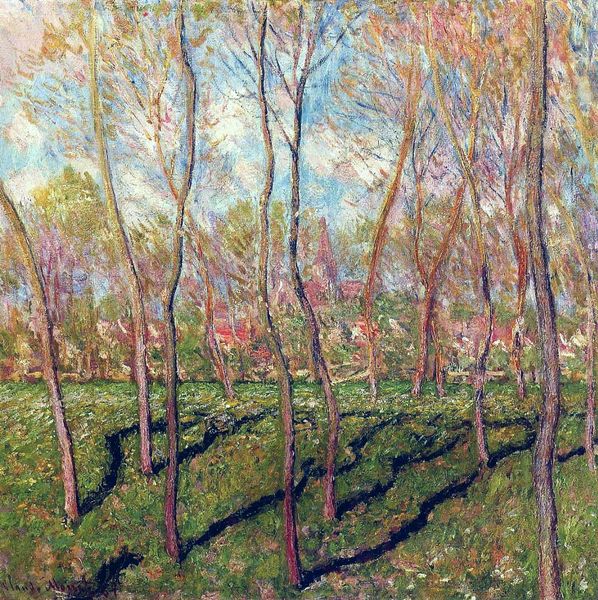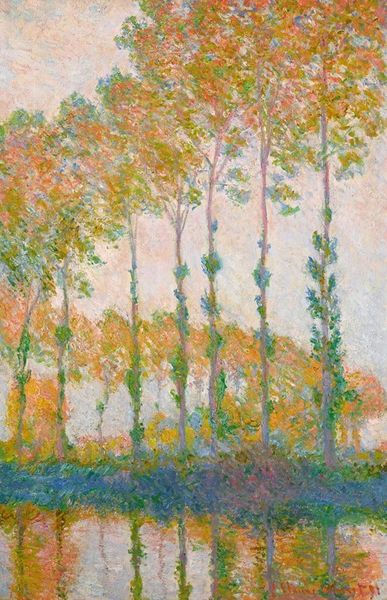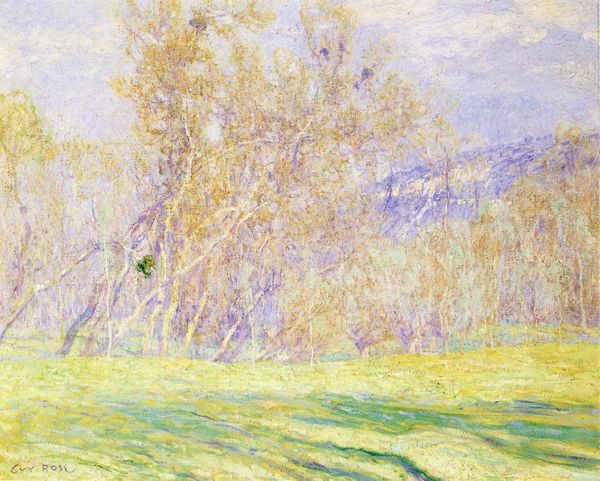
Copyright: Public domain
Curator: Welcome. Today we are looking at Claude Monet’s “Springtime Landscape” from 1894, created with oil paints. Editor: Immediately striking is the airy lightness, an almost ethereal quality created through his color choices. The blues and yellows especially dance. Curator: Indeed. Painted en plein air, this piece needs to be viewed through the lens of the late 19th century, when rapid industrialization and urbanization were challenging established social structures and rural life. Monet, choosing to focus on the fleeting beauty of nature, was not necessarily apolitical, but demonstrating a reverence for landscapes in peril. Editor: And his methodology further reflects that fleeting quality. Observe how the visible brushstrokes contribute to the dynamism, as the painting captures a singular moment in time. Light and shadow become almost tangible. Curator: That's right, but the absence of figures also highlights a focus on environmental concerns. The flowers themselves, their colors, are not merely aesthetic. They embody themes of growth, renewal, perhaps even resistance against the backdrop of ecological degradation. Editor: Yet the lack of clear definition, the haziness, speaks to a concern with the optical, too. See how Monet pushes the boundaries of perception, reducing forms to their most fundamental elements: light and color. This is less about representing reality and more about constructing an alternative vision of it through a focus on these formal elements. Curator: It’s about interrogating and memorializing specific landscapes endangered by industrial change. These idyllic representations serve as critiques, even warnings, as the landscapes they capture were vulnerable even then. They embody the precarity of pastoral environments. Editor: Absolutely, although even when we consider these readings, Monet’s dedication to representing fleeting moments—the light, the color, the texture—becomes quite apparent. Curator: In summary, we should think of Monet’s “Springtime Landscape” as less of a superficial landscape, and more as a meditation on impermanence, resistance, and social responsibility. Editor: Ultimately, it’s the composition, the light, the surface that remains memorable and forces an enduring focus on the sensorial experience of viewing.
Comments
No comments
Be the first to comment and join the conversation on the ultimate creative platform.
